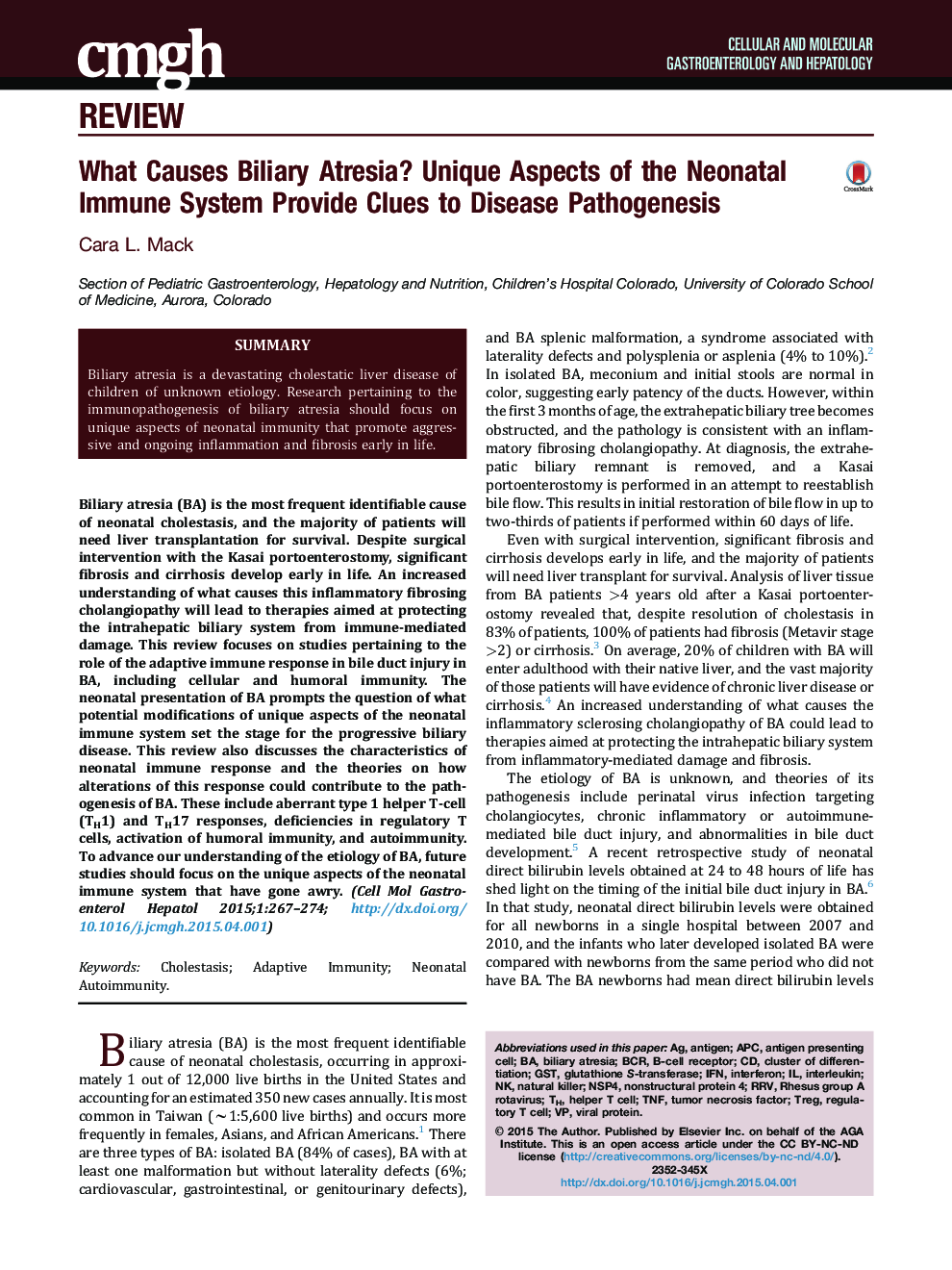| Article ID | Journal | Published Year | Pages | File Type |
|---|---|---|---|---|
| 2040949 | CMGH Cellular and Molecular Gastroenterology and Hepatology | 2015 | 8 Pages |
Biliary atresia (BA) is the most frequent identifiable cause of neonatal cholestasis, and the majority of patients will need liver transplantation for survival. Despite surgical intervention with the Kasai portoenterostomy, significant fibrosis and cirrhosis develop early in life. An increased understanding of what causes this inflammatory fibrosing cholangiopathy will lead to therapies aimed at protecting the intrahepatic biliary system from immune-mediated damage. This review focuses on studies pertaining to the role of the adaptive immune response in bile duct injury in BA, including cellular and humoral immunity. The neonatal presentation of BA prompts the question of what potential modifications of unique aspects of the neonatal immune system set the stage for the progressive biliary disease. This review also discusses the characteristics of neonatal immune response and the theories on how alterations of this response could contribute to the pathogenesis of BA. These include aberrant type 1 helper T-cell (TH1) and TH17 responses, deficiencies in regulatory T cells, activation of humoral immunity, and autoimmunity. To advance our understanding of the etiology of BA, future studies should focus on the unique aspects of the neonatal immune system that have gone awry.
